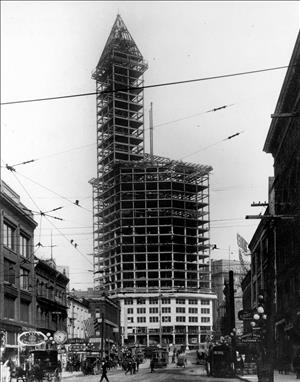On June 30, 1914, Seattle voters reject a proposed new charter that includes a city manager and district elections. Voters approve bonds for bridges across the Lake Washington Ship Canal at Fremont and at Ballard. The Municipal League and the Chamber of Commerce support the new charter and labor opposes it.
In March 1914, voters selected freeholders to draw up a charter (the city's constitution), and to improve efficiency and overcome politics. The document that the freeholders developed had a 30-member city council elected by district (voters had abandoned the ward system in 1910 in favor of nine council members elected at large). The city council would elect a business manager who would control city operations including the police department. The council would also appoint the treasurer. The city manager system had been reported as successful in Des Moines, Iowa, and in Dayton, Ohio. The mayor would retain authority to appoint several board heads and would be paid $5,000 a year. The city manager would receive $12,000 a year.
The intention was that experts instead of politicians would occupy executive offices. Business interests and the Municipal League supported the charter.
Organized labor and reformers opposed it, principally because of the return to the ward system. Prominent among opponents were Department of Lighting Superintendent James D. "J.D." Ross (1872-1939) and First Presbyterian Church Pastor Rev. Mark D. Matthews (1867-1940). Even though not an elected official, Ross had developed a considerable political base to support the public ownership of utilities. He was able to call upon City Light workers to work to defeat any measures he deemed detrimental to his department. A city manager to whom Ross might report would not be responsible to the voters, who constituted the base of support for Ross and for City Light.
Rev. Matthews told his congregation, "I wish it were possible for us to vote on the charter by sections, adopt the valuable features and reject the infamous ward system program."
In March 1914, voters defeated a single bond issue for bridges in Seattle. On June 30, voters chose to build the Fremont and Ballard bridges, but rejected bridges at Latona, Montlake, and Spokane Street.

